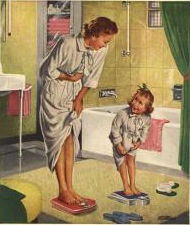![]()
Abstract
The calorie was not a unit of heat in the original metric system. Some histories state that a defined Calorie (modern kcal) originated with Favre and Silbermann in 1852 or Mayer in 1848. However, Nicholas Clement introduced Calories in lectures on heat engines that were given in Paris between 1819 and 1824.
The Calorie was already defined in Bescherelle’s 1845 Dictionnaire National. In 1863, the word entered the English language through translation of Ganot’s popular French physics text, which defined a Calorie as the heat needed to raise the temperature of 1 kg of water from 0 to 1 C. Berthelot distinguished between g-and kg-calories by1879, and Raymond used the kcal in a discussion of human energy needs in an 1894 medical physiology text.
The capitalized Calorie as used to indicate 1 kcal on U.S. food labels derives from Atwater’s 1887 article on food energy in Century magazine and Farmers’ Bulletin 23 in 1894. Formal recognition began in 1896 when the g-calorie was defined as a secondary unit of energy in the cm-g-s measurement system. The thermal calorie was not fully defined until the 20th century, by which time the nutritional Calorie was embedded in U.S. popular culture and nutritional policy.
